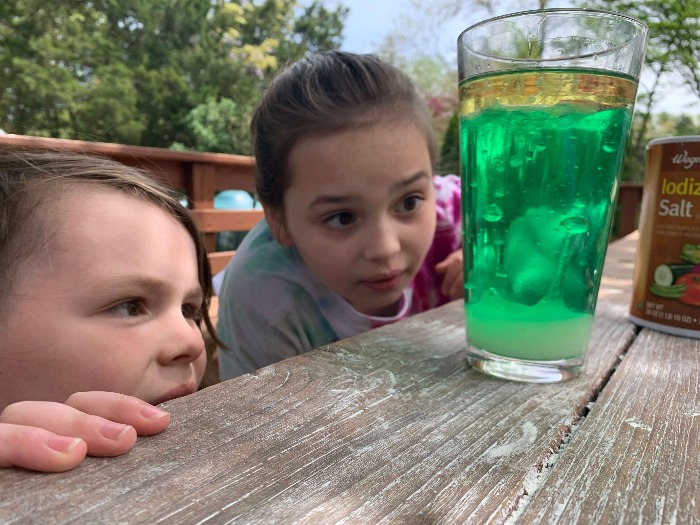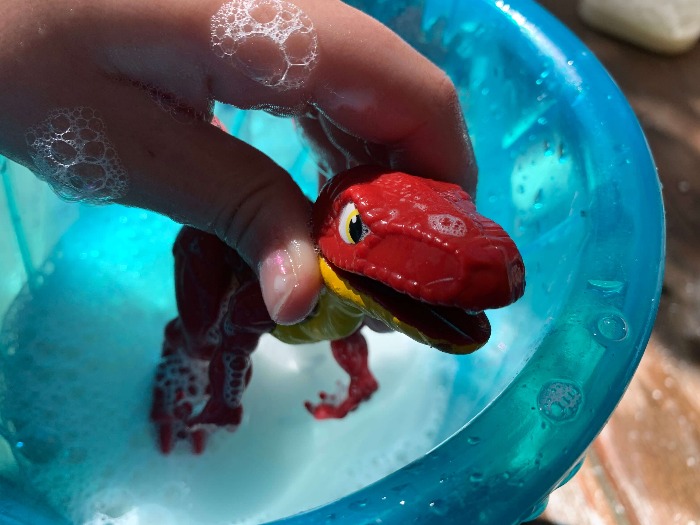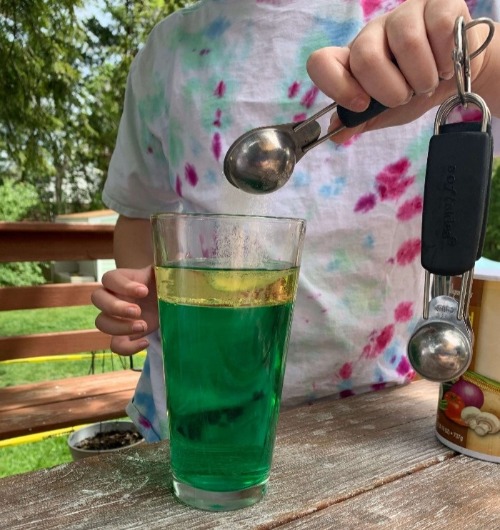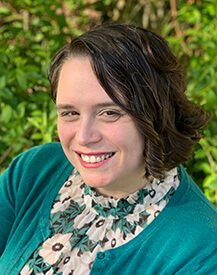Kitchen Science: Bubble Experiments
Bubble Experiments for Preschoolers!

Bubbles are fun and fascinating! Who doesn’t have fond memories of blowing bubbles in the backyard or even using a straw to blow bubbles in their milk? Playing with bubbles is more than just fun for your young scientists!
-
Bubbles give children a chance to stretch their observation muscles.
- What colors do you see in a bubble? What do your hands feel like after you pop a bubble? What do bubbles popping against the side of the bathtub sound like? Does a fizzy drink taste the same when all the bubbles are gone? The best scientists never stop using their senses, and bubbles give us a chance to make some amazing observations.
-
Playing with bubbles allows children to make predictions and test their predictions quickly.
- The simple fact that most bubbles pop is one of the most delightful discoveries a young scientist can make, but why stop there? Making predictions about how big a bubble can grow before popping, how far a bubble will float before it lands, which size straw yields the most milk bubbles, or how long you can make a bubble beard in the bath are perfect introductions to the scientific method. Each bubbly exploration is easy, quick, and doesn’t require specialized supplies.
-
Bubbles are an important part of other scientific conversations.
- When we think about bubbles for kids, slick bubble wands in neon bottles are usually what comes to mind, but bubbles can be so much more. Bring your scientist into the kitchen and set up water to boil for their mac and cheese, or watch yeast produce gas in a rising bread dough. Talk about why those bubbles are important for their dinner.
Here are some kitchen science experiments you can conduct with your young scientists at home in your kitchen or outside!

Dino Bubble Bath Experiment
Supplies needed:
¼ cup bubble bath
¾ cup cornstarch
Water
Bucket
Plastic dinosaur (or any doll, action figure, or toy that needs a relaxing spa day)
Instructions:
- Pour your favorite bubble bath into a bowl and add the cornstarch. Use your hands to squish the liquid and powder together until a dough starts to form. You may need to add a little more soap or cornstarch to get the right consistency.
Exploration Questions: How does the mixture feel when you first start to mix it? Before it became a dough, did it feel different?
- Flatten your dough and use your toy dinosaur to make tracks on the dough. You’ve made your own dinosaur trackway! A trackway is more than one footprint in a row from the same animal. Paleontologists study real fossilized footprints to learn more about extinct animals!
Exploration Questions: If someone were to see your dinosaur’s footprints, what could they figure out about your dinosaur? Where is your dinosaur going?
- Fill your bucket with water and add your trackway. Mix it up.
Exploration Questions: What do you predict will happen when you add the dough to the water? What actually happened? Use three words to describe the water after you mix it up with the dough.
- Give your dino a relaxing bubble bath!

Oil Bubble Exploration Experiment
Supplies needed:
Tall, clear glass
Water
Vegetable oil
Salt
Food coloring (optional)
Instructions:
- Fill your empty glass with water about ¾ full. If you want to add food coloring to your experiment, now is the time!
- Pour oil into your glass. How much oil you add depends on how big your glass is, but you want about an inch of oil on top of the water. You will need to let the oil and water separate again before you do the next step.
Exploration Questions: What happened right when you added the oil to the water? Where did the oil go as you poured it in? What did the two liquids look like when you let the oil and water sit for 1 minute?
- Now, sprinkle the salt on top of the oil and watch closely! Watch the glass from the side and from the top.
Exploration Questions: Make a prediction about what will happen when you add the salt. Was your prediction right? Are the bubbles all the same size? Do they all rise to the top at the same speed? How long does it take for the mixture to stop bubbling?
Why did that happen? The salt is more dense than the oil and the water so it sinks to the bottom when it is poured in. As it goes through the oil layer, the salt takes a little bit of oil with it to the bottom. Eventually, the salt dissolves, and only the oil it brought down with it is left because it doesn’t dissolve in the water. Oil is less dense than water, so the oil floats back up to the top in a “bubble”!
-----
As you can see, exploring bubbles as a science experiment at home can be fun and educational.
Share your kitchen science experiment photos with us, tag us on Facebook or Instagram.
If your students love bubbles, they will enjoy these books about bubbles.
- Every Last Bubble Must...POP! by Jason Carter Eaton
- Pop! The Invention of Bubble Gum by Meghan McCarthy
- Bubbles by Kit Chase
- Bubble Trouble by Tom Percival
- Pop! A Book about Bubbles by Kimberly Bradley and Margaret Miller
Want to learn even more Kitchen Science Bubble Experiments? Check out this video demonstration on our YouTube channel:
Check out the kitchen science experiment blog articles about Fun with Water, Fun with Color Mixing and Fun with Light and Shadows.
What kitchen science experiments do you like best?
 Hollie is certified K-8 teacher who has been educating in the informal education field since 2005. She has developed and implemented countless exciting STEAM programs for families, classrooms, and teachers focused on the natural world, the scientific process, and ancient life. Her professional passions are inquiry, whole family learning, experiential learning starting in early childhood, and the intersection of literacy and science instruction.
Hollie is certified K-8 teacher who has been educating in the informal education field since 2005. She has developed and implemented countless exciting STEAM programs for families, classrooms, and teachers focused on the natural world, the scientific process, and ancient life. Her professional passions are inquiry, whole family learning, experiential learning starting in early childhood, and the intersection of literacy and science instruction.
She has recently developed a community-based program that encourages families to use dramatic play to learn science, increase literacy skills, and have fun together for which she received the Drexel University Presidential Award for Civic Engagement. She is most proud of her work on a popular science storytelling program for preschool families and classrooms that combines a book club format with engaging programs, innovative curriculum, and a hysterical puppet storyteller.
